|
Weather
The months of June and
July are normally our best weather months in Alaska. August and September are
variable. The good weather can extend through August, but very often August is
when the autumn rains begin. In the Arctic this means snow. September is
typically a rainy month with some beautiful Indian Summer days mixed in.
Temperatures in August are mild and sunshine can be expected about half the time
- less as you approach the coast. By September the days will be cooler with a
potential for frost in the mornings. You must expect rain and cool weather at
any time – even in June and July. Temperatures
 will usually range from a high of 70 deg F (although it can feel like 95 on a
sunny windless day) to a low of 35. In the Arctic the temperature will range
from 60 deg F to a low of 25. When it rains it usually sets in for a few days
and will produce a constant, soaking drizzle with wind and cool temperatures.
In the Arctic it can snow at any time of the year. You must be prepared
for both extremes.
will usually range from a high of 70 deg F (although it can feel like 95 on a
sunny windless day) to a low of 35. In the Arctic the temperature will range
from 60 deg F to a low of 25. When it rains it usually sets in for a few days
and will produce a constant, soaking drizzle with wind and cool temperatures.
In the Arctic it can snow at any time of the year. You must be prepared
for both extremes.
|
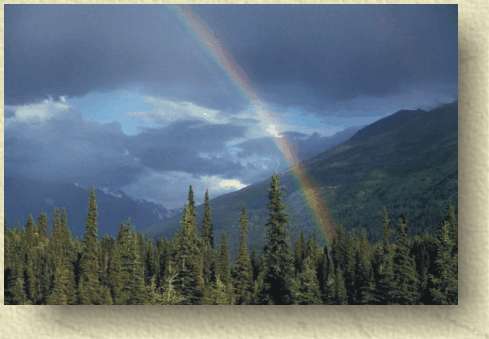
|
|
Insects
Mosquitoes and biting
flies are a very serious problem in Alaska. If you are not prepared for them
your experience can be diminished. By late August and early September,  the
mosquitoes have died down a bit but the flies will be a serious nuisance.
Bring plenty of bug protection. You
should have at least 1 bottle of 100% DEET and a headnet. I recommend a mesh
“bug jacket” that is soaked in DEET. They are not expensive (less than $40)
and more convenient than slathering DEET oil all day.
the
mosquitoes have died down a bit but the flies will be a serious nuisance.
Bring plenty of bug protection. You
should have at least 1 bottle of 100% DEET and a headnet. I recommend a mesh
“bug jacket” that is soaked in DEET. They are not expensive (less than $40)
and more convenient than slathering DEET oil all day.
|
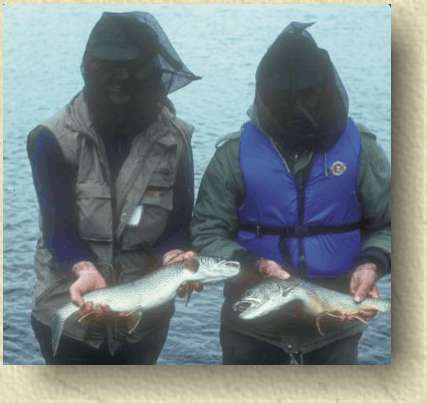
|
| Pre-Trip
Conditioning
It
goes without saying that travel in one of the most remote regions of
North America will require all participants to be in good health and in
good physical condition. Keep in mind that in case of a medical
emergency, help may be many days away. In addition, participants should
have a flexible state of mind to face the often unfamiliar and
unexpected conditions we may encounter. Experience is not required. We
must cover a certain number of river miles each day so the physical
condition and energy level of the group will determine how long we must
travel each day before we camp at night. Each participant is expected to
help their boat team paddle the raft down rive. Long days spent paddling
in sometimes very cold conditions can be quite demanding. |
|
|
River Equipment Lists |
|
|
Personal Gear
All clothing, sleeping bag, and
sleeping pad should fit into 1 river bag that I will provide. All clothing and
equipment should be chosen by the following criteria:
 |
high
quality - proven design and material |
 |
lightweight |
 |
comfortable |
 |
fast
drying - minimum water absorbency and retention |
 |
wind
resistant - at least some items |
|
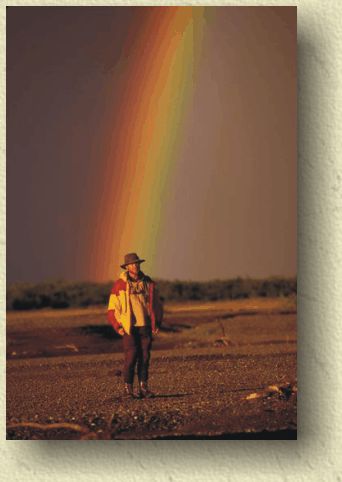
|
|
Raingear
Although light weight
raingear such as Gore Tex is more comfortable and nice for windy days or hiking,
an absolutely waterproof rainsuit will make those wet days sitting in camp or on
the raft or kayaks much more tolerable. (Nneoprene chest waders, although not
required, are nice to have for just this reason). Raingear
should be loose fitting for good ventilation of moisture. Modern water resistant
and breathable laminates such or Gore-Tex or Paclite may be acceptable. Consider
treating your gear with a waterproofing spray or a “wash-in” water proofing
solution such as Nikwax. The Nikwax lasts longer.
 |
rain
jacket - no tight elastic closures around sleeves; rubberized Helly Hansen
or Kokatat Paddling Jacket or rain skins works well in the boat. Laminates
work well for hiking. |
 |
rain
pants - full length; rubberized Helly Hansen or REI type for in the boat
or neoprene chest waders; laminates for hiking |
 |
rain
hat - Sou'wester or Seattle Sombrero type |
 |
felt insoles -
for use inside hip waders - the key to warm, dry feet |
|
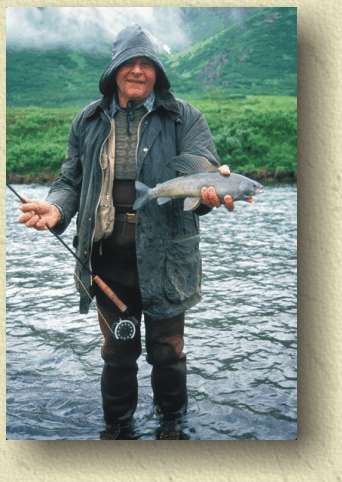
|
Clothing
 |
socks - many
pairs, warm material, wool and synthetic |
 |
long
underwear - 1 set of medium or heavyweight capilene or polypro |
 |
hat
- wool or pile stocking cap |
 |
gloves
- 2 pairs of warm pile or wool gloves. (I will provide commercial fishing
rubber gloves to be worn over these) |
 |
T-shirt |
 |
bandana |
 |
shirts
- light and warm, easy drying |
 |
pants
- fast drying; pile or other
synthetic is best; wool is acceptable. |
 |
wind
shell - lightweight nylon. (optional but a good idea) |
 |
jackets
– medium to heavyweight poly or down, windproof (or additional wind
jacket) |
 |
vest
- down or poly (optional) |
 |
shorts
- one comfortable pair |
 |
light
weight shoes for camp and tent or hiking boots |
 |
Hip waders,
rubber knee boots or chest waders (neoprene recommended for Arctic or late
summer trips) |
|
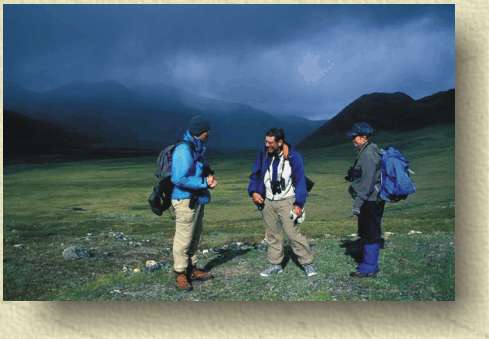
|
|
Personal
Equipment
 |
sleeping bag -
preferably synthetic, warm to 40 deg F (20 deg for Arctic trips) |
 |
daypack
or small backpack |
 |
sunscreen
- factor 15 or better |
 |
pocket
knife |
 |
personal
items - toilet kit, spare glasses, prescriptions |
 |
sun
glasses |
 |
baby
wipes |
 |
small
foam pad (for sitting on when hiking) |
 |
mosquito
repellant - 100% DEET such as Muskol or Ben's 100 |
 |
head
net or mosquito helmet |
 |
"bug
jacket" - a repellant impregnated mesh jacket (optional but highly
recommended) |
 |
fishing
gear |
 |
cameras |
 |
binoculars |
 |
book
(to pass the time if we are weathered in) |
|
|
|
Group
Equipment –
provided for you
 |
raft
and raft equipment |
 |
stove
and cooking utensils |
 |
eating
utensils |
 |
rifle
or shotgun |
 |
dry
bag - large waterproof river bag with shoulder straps for portaging. 1 per
person. |
 |
tents
- 3 person tent for each two guests (as available) |
 |
rain
tarps and other camp equipment |
 |
sleeping
pads |
|

|
